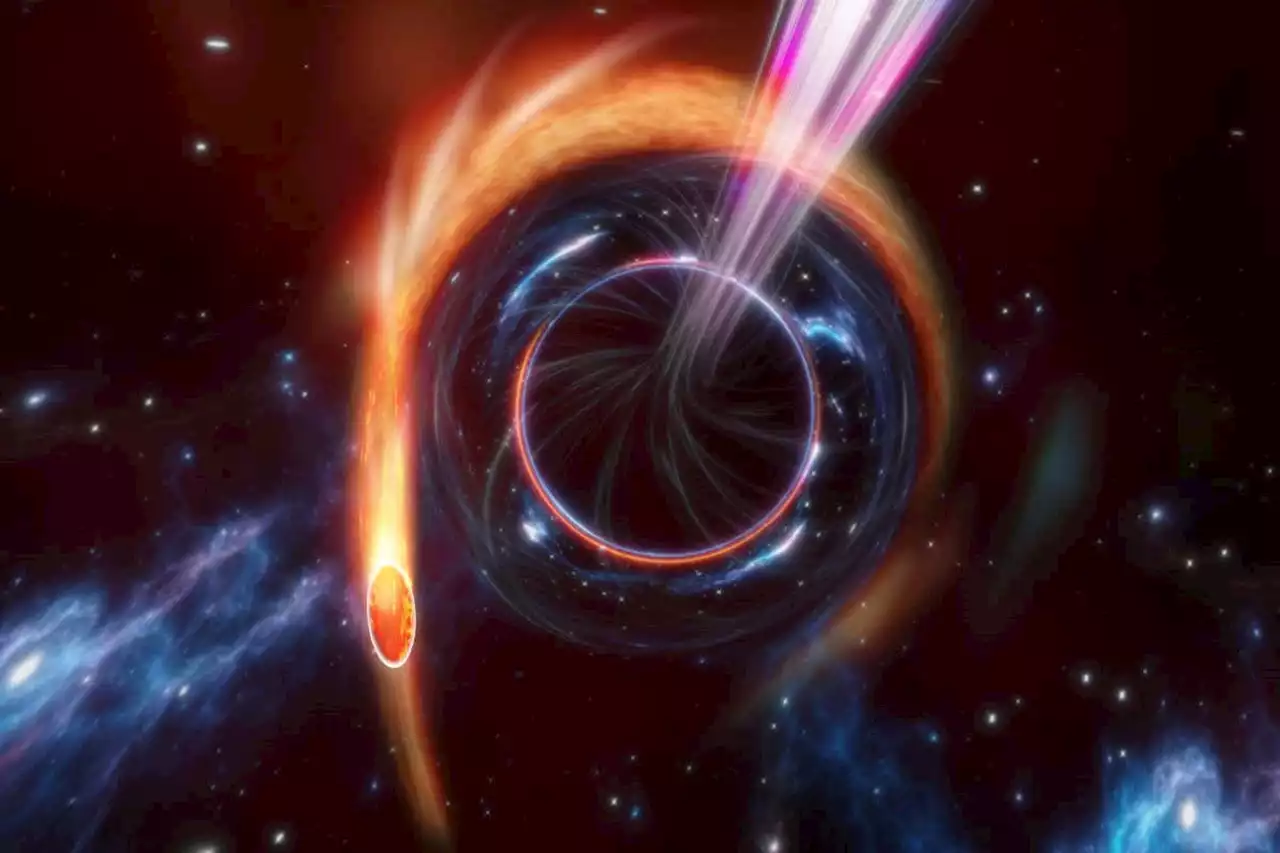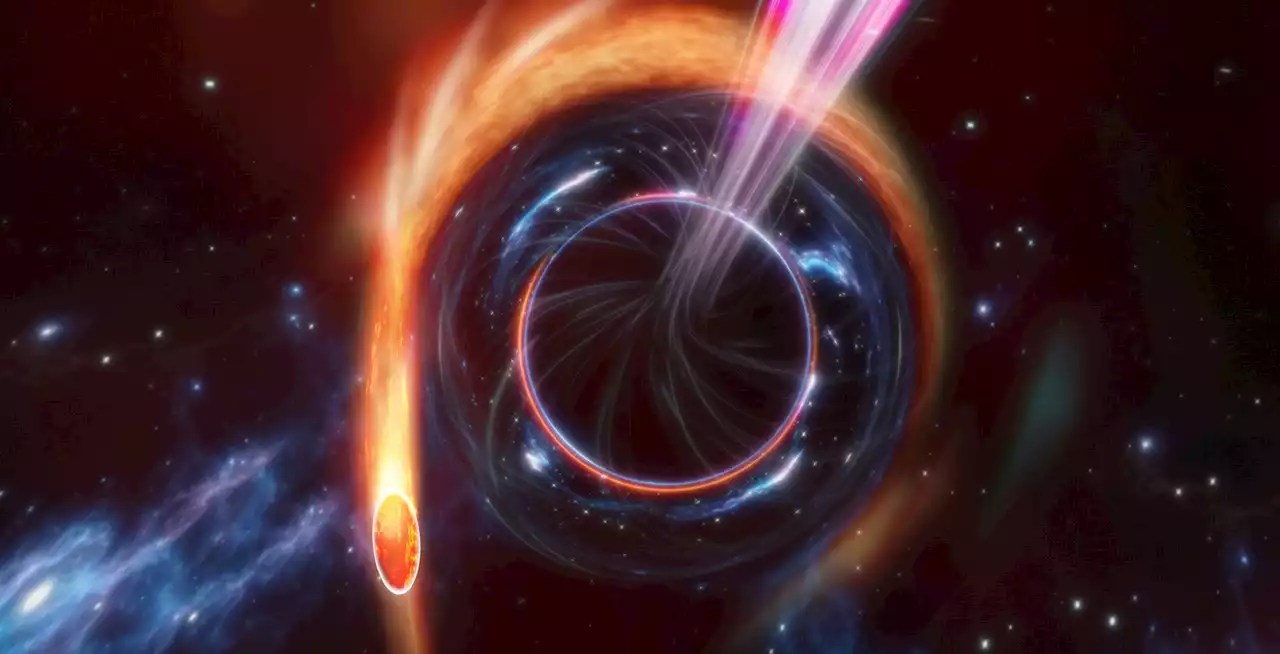A Black Hole Consumed a Star and Released the Light of a Trillion Suns - Universe Today
The Zwicky Transient Facility is housed at California Institute of Technology’s Palomar Observatory. Image: CIT/Palomar Observatory.
As the title tells us, the transient light source was a jet of matter emitted from a supermassive black hole at 99.9% of the speed of light. The light signal has a name, AT 2022cmc, and the SMBH responsible for it is halfway across the Universe. What caused it? Something extraordinary, according to lead author Pasham.
“This particular event was 100 times more powerful than the most powerful gamma-ray burst afterglow,” lead author Pasham said in a press release. “It was something extraordinary.” “The last time scientists discovered one of these jets was well over a decade ago,” said Michael Coughlin, an assistant professor of astronomy at the University of Minnesota Twin Cities and co-lead on the paper. “From the data we have, we can estimate that relativistic jets are launched in only 1% of these destructive events, making AT2022cmc an extremely rare occurrence. In fact, the luminous flash from the event is among the brightest ever observed.
This artist’s impression illustrates how it might look when a star approaches too close to a black hole, where the star is squeezed by the intense gravitational pull of the black hole. Some of the star’s material gets pulled in and swirls around the black hole forming the disc that can be seen in this image. In rare cases, such as this one, jets of matter and radiation are shot out from the poles of the black hole. Image Credit: ESO/M.
“We know there is one supermassive black hole per galaxy, and they formed very quickly in the universe’s first million years,” says co-author Matteo Lucchini, a postdoc in MIT’s Kavli Institute for Astrophysics and Space Research. “That tells us they feed very fast, though we don’t know how that feeding process works. So, sources like a TDE can actually be a really good probe for how that process happens.
United States Latest News, United States Headlines
Similar News:You can also read news stories similar to this one that we have collected from other news sources.
 Supermassive Black Hole Violently Rips Star Apart, Launches Relativistic Jet Toward EarthRare Sighting of Luminous Jet Spewed by Supermassive Black Hole Astronomers discover a bright optical flare caused by a dying star’s encounter with a supermassive black hole. What happens when a dying star flies too close to a supermassive black hole? Several things happen, according to Unive
Supermassive Black Hole Violently Rips Star Apart, Launches Relativistic Jet Toward EarthRare Sighting of Luminous Jet Spewed by Supermassive Black Hole Astronomers discover a bright optical flare caused by a dying star’s encounter with a supermassive black hole. What happens when a dying star flies too close to a supermassive black hole? Several things happen, according to Unive
Read more »
 Black hole ripping a star apart: Rare phenomenon observed by astronomersThe new observation is one of only four instances in which a rare relativistic jetted TDE has been detected by astronomers.
Black hole ripping a star apart: Rare phenomenon observed by astronomersThe new observation is one of only four instances in which a rare relativistic jetted TDE has been detected by astronomers.
Read more »
 Distant black hole is caught in the act of annihilating a starAstronomers have detected an act of extreme violence more than halfway across the known universe as a black hole shreds a star that wandered too close to this celestial savage. But this was no ordinary instance of a ravenous black hole.
Distant black hole is caught in the act of annihilating a starAstronomers have detected an act of extreme violence more than halfway across the known universe as a black hole shreds a star that wandered too close to this celestial savage. But this was no ordinary instance of a ravenous black hole.
Read more »
 Star ripped up by black hole is one of the brightest things ever seenA star orbiting a supermassive black hole at the centre of a distant galaxy was ripped apart in a tidal disruption event, the furthest ever observed
Star ripped up by black hole is one of the brightest things ever seenA star orbiting a supermassive black hole at the centre of a distant galaxy was ripped apart in a tidal disruption event, the furthest ever observed
Read more »
 NASA Scientists Use Discover Supercomputer To Create Black Hole JetsNASA Goddard Space Flight Center scientists ran 100 sophisticated simulations exploring jets — narrow beams of energetic particles — that emerge at nearly light speed from supermassive black holes. These behemoths sit at the centers of active, star-forming galaxies like our own Milky Way galaxy, and
NASA Scientists Use Discover Supercomputer To Create Black Hole JetsNASA Goddard Space Flight Center scientists ran 100 sophisticated simulations exploring jets — narrow beams of energetic particles — that emerge at nearly light speed from supermassive black holes. These behemoths sit at the centers of active, star-forming galaxies like our own Milky Way galaxy, and
Read more »
